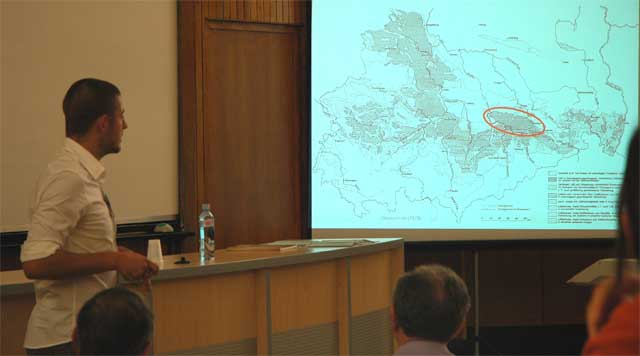LOESSFEST'09 | Aug. 31st – Sept. 3rd, 2009 |Novi Sad-Serbia
Late Pleistocene Loess Paleosol Sequences in Saxony (Germany) - New Results
Sascha Meszner1, Dominik Faust1
1TU-Dresden, chair of Physical Geography, Helmholtzstraße 10, 01069 Dresden, Germany
The study of loess deposits in saxony should help to reconstruct the late pleistocene climate and the resulting landscape evolution in this region.
Mostly the upper sediments in this area are represented by weichselian loess deposits. These deposits could have a thickness up to 10 m. The weichselian loess deposits are covering a subjacent strong eemian pedocomplex and developped at its top a holocene luvisol (1). In between we could identify a number of interstadial paleosols and sequences with reworked material. The paleosols represent geomorphic stable phases with low erosion rates and a vegetation cover. In opposite layers containing reworked material stand for phases with extensive transformation of the landscape surface. We often observe paleosols covered by reworked paleosol sediments (11) which are hardly to distinguish. Paleosol and covering paleosol sediments as a whole are called pedocomplex. Especially during lower Weichselian phase strong reworking of material took place.

On the basis of five solid investigated sites we compile a new stratigaphy for loess deposits in the middle east of Germany. According to existing stratigaphies (Lieberoth, 1963} we find many similarities but also some differences. Especially between the upper and the middle Weichselian loess we observe conspicuous variations in terms of intensity of pedogenesis and redeposition of soil sediments. Furthermore in the upper part of the sequence a new brown soil was detected and in the lower part we observed a humic dark soil (12) covering the eemian soil. We could observe that the in situ eemian Luvisol is rarely conserved whereas the eroded eemian soil is deposited as a soil sediment (11). This feature is conserved in nearly all sites.
These new results are in accordance to some findings conducted in loess sequences in the western part of Germany (Semmel, 1989; Schirmer, 2000; Andersen et al., 2004; Zöller et al., 2004).



